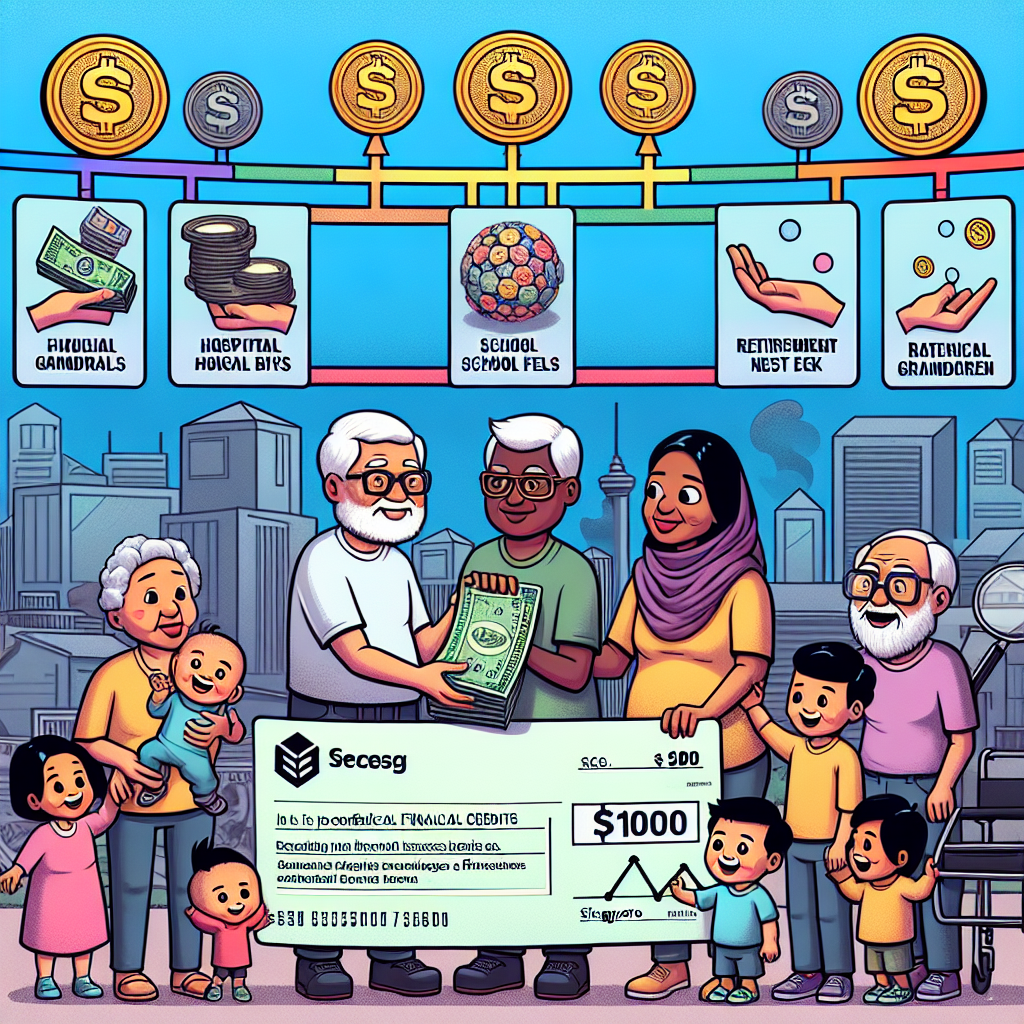Singapore’s Families Scheme, New S$1,000 LifeSG Credits Released on Sep 10

Alright, let’s unpack this smackdown of fiscal policy wrapped in a Singaporean bow — the Families Scheme’s new S$1,000 LifeSG credits. If you haven’t been tracking the latest financial vibes from the Lion City, here’s the TL;DR: the Singapore government is dropping a fresh S$1,000 credit on families, ostensibly to supercharge long-term savings and provide some fiscal flex in these uncertain times. Sounds lit, right? But as someone who’s been swimming deep in the Web3 ecosystem, where decentralization and user sovereignty reign supreme, this move triggers some interesting questions about how governments engage with citizens’ wallets and life priorities.
First off, let me flex my tech hype perspective here: the Families Scheme feels like a classic centralized liquidity injection but with a socially engineered twist. It’s basically the traditional welfare mechanism upgraded with a branding makeover — LifeSG credits, which can presumably be used for certain life or family-related expenses, designed to optimize quality of life and social stability. From a gut feeling, this appears to be a calculated nudge from the state to encourage people to lock in savings for longer-term goals like healthcare, education, or retirement.
But here’s the kicker: in a world where fintech, DeFi, and token economies are fracturing traditional financial control, hands-down, the LifeSG credits present a fascinating study on the tension between centralized welfare disbursements and the ideal of radical financial freedom. Yeah, it’s cool that families can get some immediate and stable liquidity — but what about the opportunity cost of keeping those credits confined to predefined spending channels? Talk about a straightjacket for capital mobility.
Digging deeper, the Families Scheme’s rollout can be seen as a hedged bet against the increasing unpredictability of global markets. Governments, especially those who play in the economic sandbox like Singapore, want to buffer their citizens against shocks without dismantling the fabric of their social contract. The LifeSG credits function as a glue to reinforce intergenerational wealth transfer, something increasingly fragile as the cost of living balloons and family units face more fracturing due to economic stress. This isn’t just cash handouts; it’s a systemic play to keep the family as a core economic unit intact.
However, from my vantage point, this is the exact kind of playbook that the Web3 ecosystem wants to flip on its head. Imagine if these credits were tokenized assets on a blockchain, fully transparent, programmable, and tradeable within a peer-to-peer economy that respects autonomy but also incentivizes social good using smart contracts. Instead of administratively deciding where and how you must spend these funds, participants could choose to stabilize their finances or invest in community projects — or heck, even stake those tokens for yield and grow their capital sustainably.
The current form of LifeSG credits is reminiscent of legacy loyalty points or digital vouchers — externally controlled and limited in scope. The question becomes: are governments leveraging digital innovation to actually empower users, or just digitally binding them under the same old rules? We’re at the crossroads of technology and policy innovation where the answer can redefine social welfare for the next decade.
Now, zooming out a bit, let’s talk about optics and messaging. Announcing the S$1,000 credit release on September 10 seems like a well-timed maneuver aligned with budget cycles and political calendars. It’s a feel-good gesture amid rising inflation and economic uncertainties that touches families directly. Praise where it’s due — governments need to flex proactive programs addressing family wellbeing and longevity. But as someone who’s been evangelizing for tech disruption, I’m half-expecting smooth marketing gloss rather than truly transformative financial inclusion.
There’s also a behavioral economics angle here that’s hard to ignore. People love free money — especially when framed as a “credit” rather than a “handout” — psychological framing 101. But rather than cultivating financial literacy or flexible wealth-building habits, there’s a risk of creating a dependency cycle where citizens wait for periodic credits instead of aggressively pursuing financial independence with tools that the private and decentralized sectors rapidly develop.
To those who argue that such governmental schemes stabilize social safety nets: sure, there’s undeniable value in that argument. Especially in a superdense urban economy where the cost of multigenerational living is staggering and the pace of life leaves little room for error, the LifeSG credits could very well act as a defibrillator for family cohesion and wellbeing.
But why settle for defibrillators when we could be engineering whole new hearts? The future of social schemes isn’t static credit allocations; it’s dynamic and programmable ecosystems that adapt to user behaviors, incentivize long-term wellness, and bridge the gap between public good and private autonomy. That future is blockchain-native, modular, and self-sovereign.
In conclusion, Singapore’s Families Scheme and the LifeSG credits offer a snapshot of modern governance trying to mix social responsibility with digital-age optics. It’s a well-engineered, pragmatically optimistic move to buffer family futures against macroeconomic turbulence. But the underlying structures show the tension between centralized control and emergent financial sovereignty.
So, here’s the takeaway for the next-gen policy architects and crypto innovators: embed flexibility, transparency, and user empowerment at the core of social schemes. Don’t just digitize the old paradigms; revolutionize them. Because in the intersection of tech and society, the only true sustainable win is when people aren’t just surviving with government aid but thriving with autonomy and community-powered wealth.
And hey, if the current systems do roll out an NFT of these LifeSG credits someday, count me in — I’ll be the first to stake, swap, and YOLO the heck out of it. Until then, let’s keep hacking the future of finance one credit at a time.

